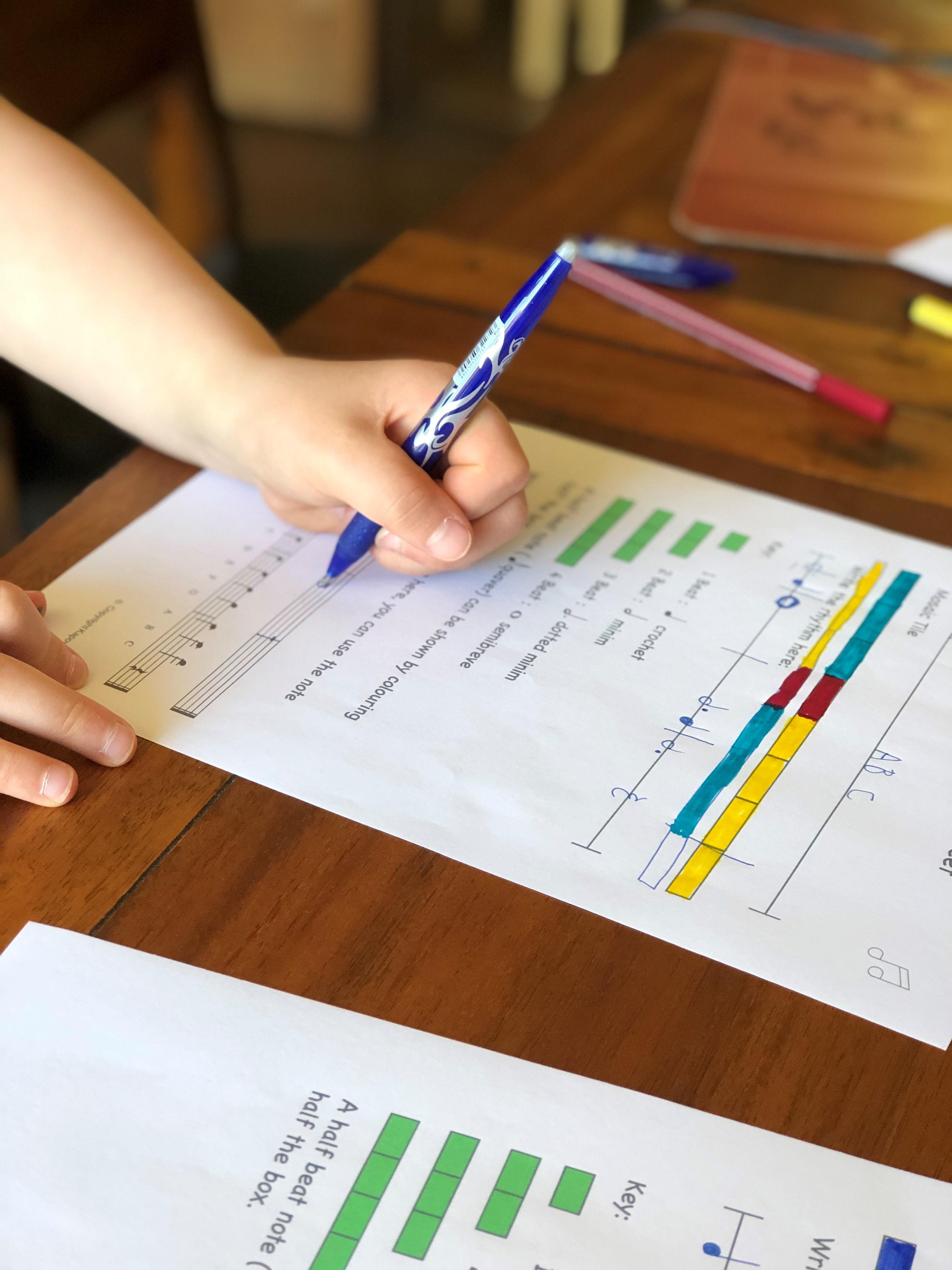
4 minute read
ADVENTURES IN HOME LEARNING
Like a large proportion of the rest of the world, Dr Liz Stafford has been attempting to run a home school whilst still working full time. Here she shares her experience of teaching music to 9 year-old Isla.
Perhaps naively, in the first week of homeschool when I constructed my timetable, I decided that I didn’t need to put music on it, because my daughter plays two instruments and could just practice those. Silly, silly, me! The drumkit is gathering a thick layer of dust, and I think the tenor horn may actually be growing mould?!
When we returned after Easter I was determined that we would do some music. After all, it is literally my job! I decided that since I had the luxury of organising our own timetable, I would do one lesson a day, using what would ordinarily be a half term unit for weekly delivery. At this point the cherry trees around and about our area were all in bloom, so I selected a unit called Hanami (which is the practice of looking at cherry blossoms) which I originally wrote for Kapow Primary
We began by going outside to look at a blossom tree. We discussed what we could see, hear, feel, and smell, and made a list of describing words to capture this. We took each of our describing words and spoke them onomatopoeically, exploring vocal timbre. The following day, we explored my instrument collection and matched instrumental sounds to some of our describing words, again exploring timbre but this time with instruments.
The next lesson involved using our descriptive words to create a Haiku, which we would set to music in the final lesson. We cheated and wrote two haiku verses to give us a longer piece of music!
On the penultimate day we made a melody for our haiku. Originally I had intended to do this on a glockenspiel, but my daughter asked if we could use the piano instead. I was amazed at how quickly she was able to create and memorise a tune on the piano despite never having any experience on this instrument! We wrote the tune down using letter notation (she does read music, but given that she was working on an unfamiliar instrument we simplified the notation aspect).
On our final lesson, we rehearsed singing and playing our haiku melody, adding some of the atmospheric sounds that we had created in lesson 2. I was interested that my daughter wanted to play the ‘proper’ instrument rather than all the classroom percussion which I thought she would be drawn to. It just goes to show that music can be a serious business!
The success of this project encouraged me to try something a bit more complex for our next week of lessons. Again adapting materials that I originally wrote for Kapow Primary, we tackled the concept of motifs. This topic is linked to the Romans which had been one of Isla’s themes earlier in the year, so it was a good chance to revise that learning and then introduce something new.
This topic involves listening to and understanding the concept of a motif, followed by writing one’s own using coloured mosaic ‘tiles’ to indicate rhythm and melody. The extension activity is then to translate this into staff notation. As a music reader already, I was tempted to go straight to the extension, but that would have missed out the fun (and tenuous!) Romanthemed part. I was fascinated to see Isla working with an unfamiliar form of notation, and the lightbulb moment when she realised how it could relate to staff notation. For her it was the other way round than for most children, in that she was using her knowledge of staff notation to understand graphic notation! It just goes to show that sometimes we may underestimate our learners!
The next part of the topic involved exploring the ways that motifs can be altered, for example through rhythmic changes and transposition. We quickly discovered that our motif wasn’t great for playing backwards because it came out exactly the same! We transposed our motif into different keys and noted how some notes had to change to preserve the motif correctly—using the black keys on the piano as a visual aid.

Finally we created a composition based on the original motif and one variation, to which I added a (very basic and hammy!) accompaniment, which you can watch here.
Eagle-eyed readers may notice a theme developing with our music lessons! Isla became fascinated with the piano, so much so that we have now moved on to piano lessons, using Thompson’s Easiest Piano Course—an oldy but a goody! As an educator, and a parent, I have been fascinated by her perseverance with this instrument compared to the Tenor Horn, which she has been learning for several years.
With the Tenor Horn, as soon as a note comes out wrong, or she doesn’t understand something, she is in floods of tears. With the piano, she just sits quietly, works out what went wrong, and then starts again. I wonder if it is a motivational issue in that she wants to play piano, but the tenor horn was given to her as the only instrument option at school? But then when I consider the drums, which she’s been learning for a year, she is super excited about lessons, but completely refuses to practise at home whatsoever! It’s certainly a conundrum I’ll be contemplating for a while!
Unfortunately for me, the piano lessons are going a little too well, and she keeps asking if she can ‘quit brass’ when she gets back to school…. Another problem to ponder during lockdown……!

Dr Elizabeth Stafford
Dr Elizabeth Stafford is Editor of Primary Music Magazine, Director of Music Education Solutions, and Senior Lecturer at Leeds College of Music. @DrLizStafford






